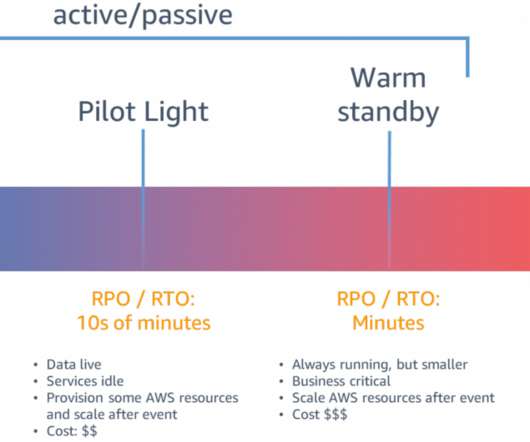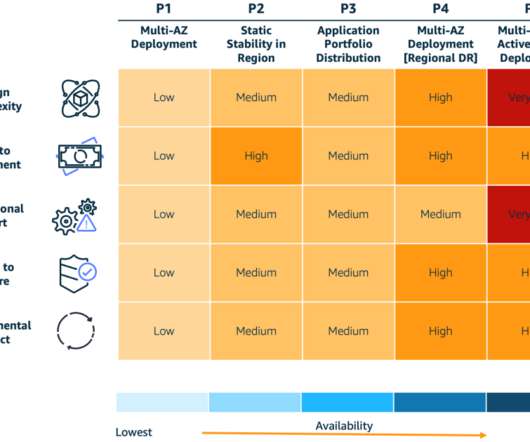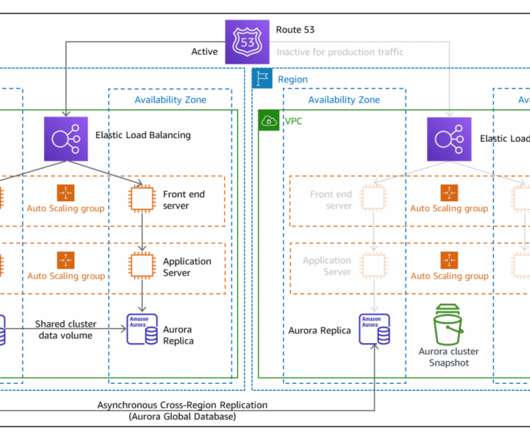Disaster Recovery (DR) Architecture on AWS, Part I: Strategies for Recovery in the Cloud
AWS Disaster Recovery
APRIL 5, 2021
Figure 2 shows the four strategies for DR that are highlighted in the DR whitepaper. Active/passive and active/active DR strategies. Active/passive DR. Figure 2 categorizes DR strategies as either active/passive or active/active. In Figure 3, we show how active/passive works.











Let's personalize your content